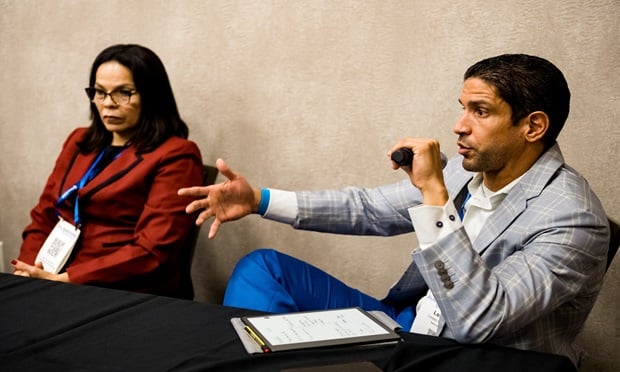Retirement confidence in the U.S. has catapulted in 2015,according to State Street Global Advisers 2015 RetirementSurvey.
|A bit more than half, or 51 percent, of respondents thatparticipate in a workplace plan say they are extremelyor very confident about their retirement readiness, up from 36percent last year.
|In 2013, only 21 percent of respondents felt as confident aboutretirement.
|The survey compares U.S. perceptions on retirementreadiness to those in the United Kingdom, Ireland, andAustralia.
|Confidence is highest in the U.S. But that doesn’t mean itnecessarily should be.
|In Australia, only 32 percent of respondents are highlyconfident in their retirement prospects.
|But Aussies save substantially more than Americans, largely dueto higher contribution and deferral rates, which are mandated atthe federal level.
|Average household income for respondents in Australia was$66,000, compared to $107,000 in the U.S, according to thesurvey.
|Yet the average investable assets for respondents down underwere $349,000, compared to $247,000 in the U.S.
|Australia mandates that employers contribute 9.5 percent ofsalary to a savings plans, and is currently weighing proposals tomove that to 12 percent in the future. Workers there alsocontribute and average of 7.5 percent to defined contributionplans.
|“In the United States, mandatory employer contributions wouldclearly be at odds with America’s business culture,” according tothe report’s authors. While mandated contribution levels werewidely unpopular at first, they have become an accepted standard inthe Australian benefits landscape.
|Australians’ higher saving levels, in spite of makingsignificantly less than Americans, is clear evidence of theeffectiveness of higher contribution rates on retirementpreparation, according to the report.
|In the United Kingdom, where 43 percent of survey respondentsexpressed high levels of retirement confidence, the government hasmandated auto-enrollment in workplace plans for the largestemployers in 2012 and has been phasing more employers in since.
|Of those automatically enrolled, only 10 percent have opted outoverall, according to State Street.
|“It’s unlikely that the United States would implementauto-enrollment nationwide,” said the report, even as more statesare exploring implementing such requirements for small employers at the statelevel.
|In spite of a general preference for lower government regulationin the U.S., the survey’s authors suggest looking down under andacross the pond could be instructive for those plan sponsors with agenuine investment in improving savings outcomes.
|Fredrik Axsater, global head of SSGA Defined Contribution, saysthe “Australian paradox” debunks the presumption that retirementconfidence is strictly correlated with higher account balances.
|The recent drop in global commodity prices has likely impactedAustralians’ confidence levels, as the country is a majorcommodities exporter, notes the report.
|“Both plan sponsors and participants need to consider otherfactors when assessing confidence, such as culture, the state ofthe economy, pending legislation, plan design and individualcircumstances,” said Axsater in a release.
|“It is important that we move away from a singular view ofconfidence to a broader view of the financial life of people,” headded.
Complete your profile to continue reading and get FREE access to BenefitsPRO, part of your ALM digital membership.
Your access to unlimited BenefitsPRO content isn’t changing.
Once you are an ALM digital member, you’ll receive:
- Critical BenefitsPRO information including cutting edge post-reform success strategies, access to educational webcasts and videos, resources from industry leaders, and informative Newsletters.
- Exclusive discounts on ALM, BenefitsPRO magazine and BenefitsPRO.com events
- Access to other award-winning ALM websites including ThinkAdvisor.com and Law.com
Already have an account? Sign In
© 2024 ALM Global, LLC, All Rights Reserved. Request academic re-use from www.copyright.com. All other uses, submit a request to [email protected]. For more information visit Asset & Logo Licensing.








